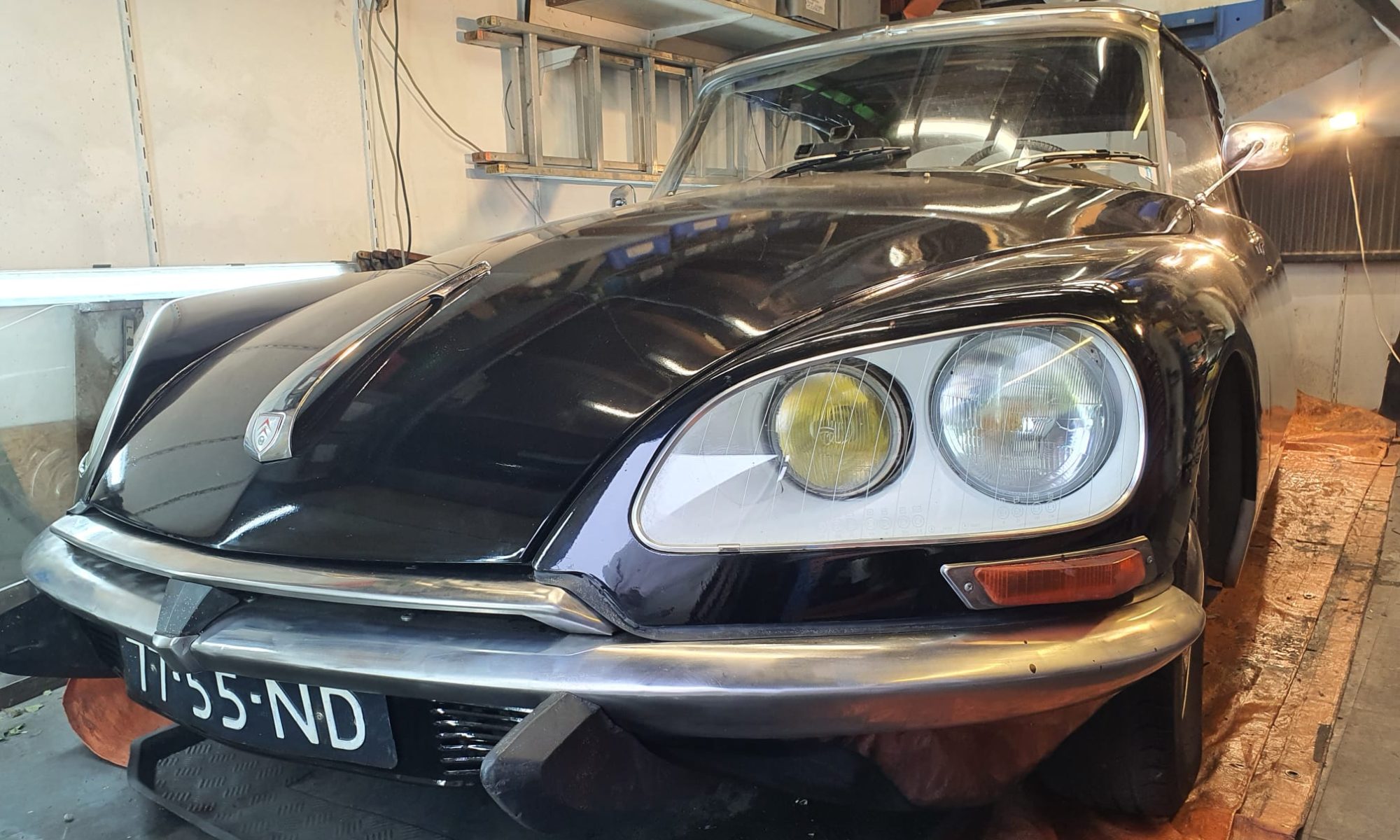In this post we’ll describe our solution to reduce our domestic natural gas consumption by at least 50% in the coming winter ’22-’23.
The original plan:
- stop heating part of the house;
- per room where necessary additional heating with electric ceramic 500 watt wall plug heaters with thermostat;
- Downstairs in the living / cooking room primarily with an LPG-fired potbellied stove to heat the room, possibly supplemented by 2 pieces of ceramic heaters, with thermostat.
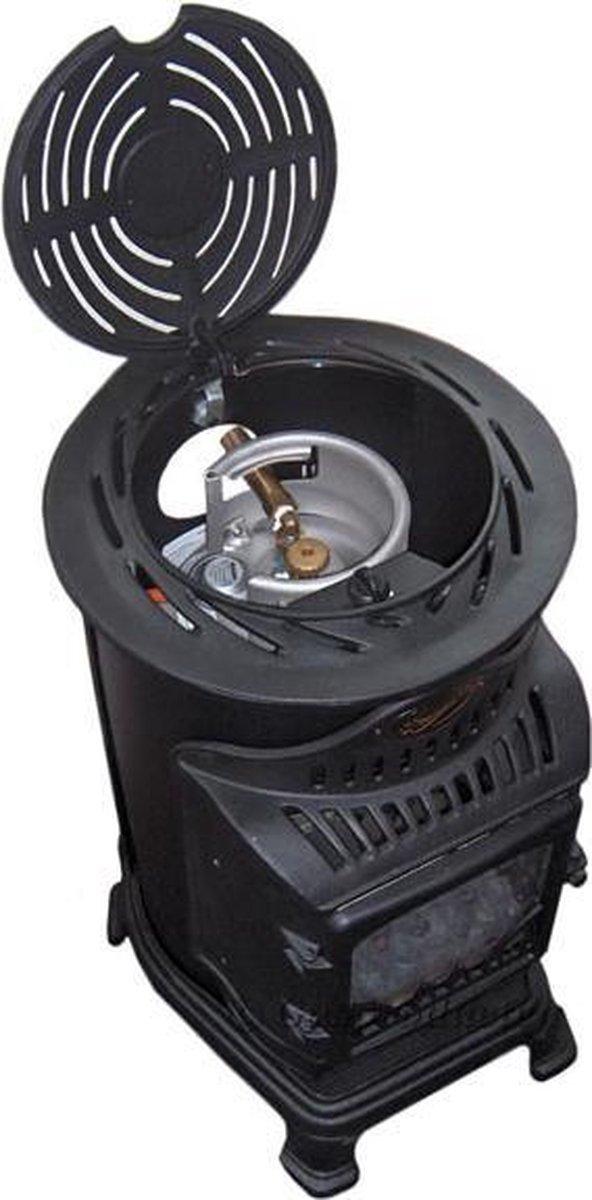
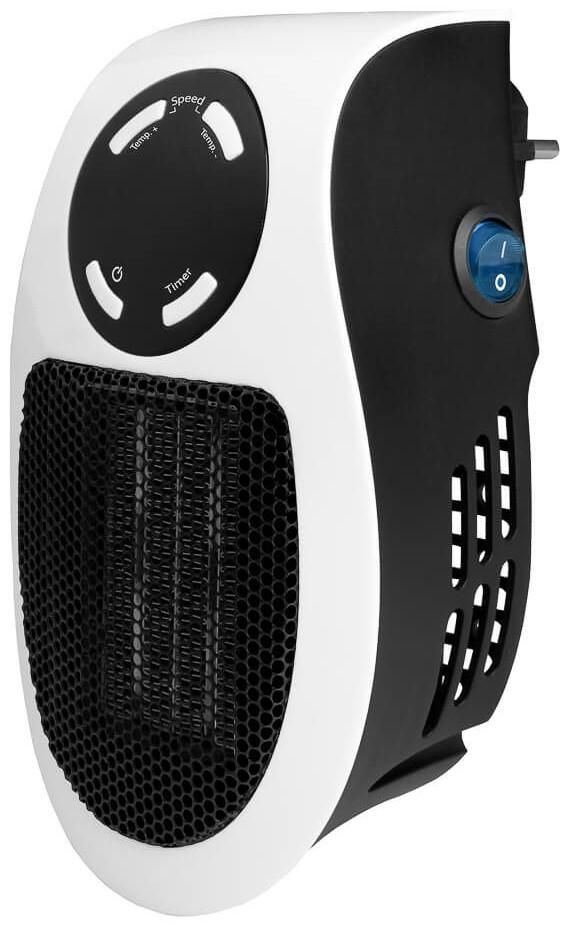
Second thoughts..
When you start calculating with energy values and electricity prices you quickly find out that a solution with electric supplementary heating is not very feasible.
Electric heating is just not very economical because -despite the high energy prices- it is still twice as expensive to heat with electricity compared to heating with natural gas (in a nutshell: 1 m3 of natural gas at Eur 4 per m3 provides as much energetic energy as 8 kWh of electricity at Eur 1 per kWh. And 4 Euro is half of 8 Euro).
The heat pump installation instead of the ‘old’ natural gas powered central heating system
If energy prices remain as high as in August 2022, we will as soon as possible install a complete electric heat pump system with split units.
We will then also completely abandon the natural gas-powered central heating system, because we already have a low-temperature central heating system with underfloor heating.
And that’s extra handy when using a heat pump system:
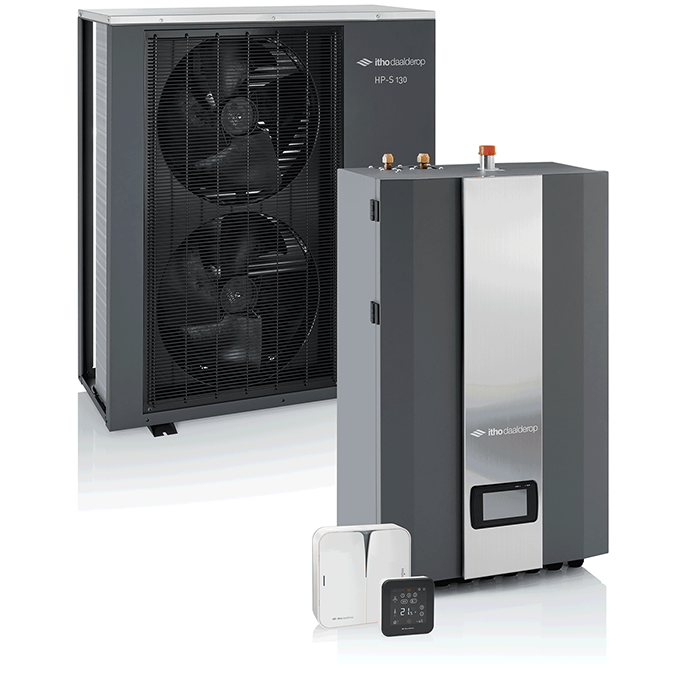
Split outdoor unit (left) and the indoor unit (right) with 12.6 kW heating capacity for an all-electric heat pump system without gas-fired C.H. support.It’s not going to be a hybrid system, with the gas-fired central heating system staying put when it gets colder than about -5 degrees.
You’ll never get rid of the gas, because you’ll just have a heat pump system that’s too small to continue without the central heating support if the gas is ever turned off, or you just want to get rid of it.
With a hybrid heat pump system, the gas-fired central heating boiler has to intervene when it gets too cold (outside below -5 degrees) or if you haven’t heated up for too long and it therefore takes too long without the intervention of the gas-fired central heating boiler before it gets a little warm.
Up to 6-8 kW there are hybrid systems that work together with the existing central heating boiler. If you want a system that can replace the gas-fired central heating boiler, we need to calculate exactly what heat output we need.
The existing gas fired HR boiler is a Nefit smartline HRC24 CW4. It has a maximum output of 24kW.
According to the experts, our heat pump must have a SCOP value of at least a factor of 5.
This means that the electrical energy that you put into the heat pump system for the transport of energy ensures that five times more energy is delivered to (hot central heating) water at a maximum temperature of 55 degrees Celsius.
This is due to the operating principle of the heat pump, just like condenser (washing) dryers and air conditioners with heat pump principle.
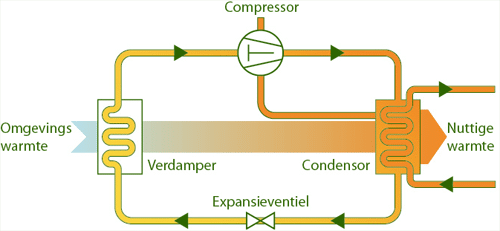
When it gets colder outside, the efficiency of the heat pump in terms of heating does decrease.
So, for a heat output of 24 kW, you need a heat pump system that can deliver 24 kW of energetic water heat. And that system uses 24/5 = about 5 kW of electricity at a SCOP value of 5.
Because such heat pump systems are based on standard connections to the 230Volt mains supply with a 16 Ampere connection rating, the common heat pump systems are usually somewhat smaller than 24kW. The value we selected for the split system is 12.6 kW. This keeps the electrical power consumption well within the 16 amp standard of the connection value of the electrical groups in our house.
It could be that in case of severe frost we have a problem to really heat up the house, we take that for granted. When we talk to the installer/supplier about the heat pump system we’ll also have them calculate whether a 12.6 kW system will do. And if necessary, we will opt for a slightly larger system.
The split outdoor unit will be placed on the flat roof, somewhere between the solar panels, or on the sloping roof, just below the skylight with special sloping roof brackets. It has to be a quiet model anyway, which may be difficult because these outdoor units are never quiet. So it also needs a night mode with low-speed pump and fan operation.
We might also install an intermediate boiler next to the indoor unit, so there will always be a supply of hot water. If we can take a shower with that, we can turn off the instantaneous water heater and only use the instantaneous water heater when it gets too cold outside.
The cost is about 7500 Euro for this installation and we are willing to pay that. You will also receive a 2500 Euro subsidy in retrospect.
The insulation of our terraced house is also excellent, and we will be satisfied if the heat pump works in such a way that the first floor can be heated to 20 degrees. We want to keep the bedrooms at an average of 15 degrees. The second floor goes on the anti-frost mode…
And I’m not even thinking about the payback.
We have to get rid of the gas in any case, and our C.V. boiler is now 20 years old, all kinds of things have been replaced and it works fine again every time after the repair.
But replacement is coming.
And whether that is useful, given the desire to get rid of gas?
Better to do it right the first time.
Cooling with the central heating system and the heat pump is also possible.
Incidentally, I want a heat pump system that can actively cool in summer.
In principle, this is quite possible with an all-electric heat pump system.
The radiators will then become cold.
That seems like a very useful option, I’m curious how my thermostatic valves would cope with that!
Our household’s heating situation
Our house still has, among other things, a floor heating system directly fired by the central heating system on the first floor and insulated glass on all floors. The cavity walls are still without insulation (we should do something about that but the wall surface is so small compared to the windows that the effect of wall insulation is probably not very big, according to the experts…) and we have an attic that is not used as a bedroom.
So we are not going to heat the attic in any case, and that makes a difference.
And we already cook electrically, the oven is also electric. The kitchen tap is electric, and the shower water (and sink) are also heated electrically via an 11kW instantaneous water heater.
Heat pump or air conditioning system?
An air conditioning system would also be an option, of course, as this also works on the heat pump principle. At the moment, the only air conditioning system that is quite OK in terms of efficiency and affordable in terms of installation is a multiple air conditioning system with one unit outside and several inside.
You must have an installation with a COP value above 5 because then you also have a bit of efficiency when it gets cold if you also want to heat with it.
Such a multi-airco system with 4 indoor units and 1 outdoor unit with a COP value of 5.5 can be installed in your home from about 5 to 7 thousand euros. Whether it’s beautiful, in each room such an air conditioner on the wall and outside a large unit on the give or on the sloping roof, I do not think, but at least all ugly CV pipes and radiators can be removed. Maybe the holes in the mezzanine floors can be reused for the air conditioning pipes…. Advantage of such an 80’s house: there are no central heating pipes in the floors, everything is in sight.
The price for such an airco installation seems a lot of money and it is.
A central heating system is just as expensive to install. From scratch, that is.
Not to mention the installation of heat pump systems in existing houses, because that easily exceeds 7500 Euros. But then you can leave the radiators in place and just use the underfloor heating system.
Not to mention the subsequent installation of heat pump systems in existing houses, because that easily exceeds 7500 Euros. But then you can leave the radiators in place and just keep using the underfloor heating. That seems to me the best solution in the end.
But I will quickly check the prices and options of complete air-to-heat split units heat pump systems.
We’ll try to prepare as best as possible and choose upon all available data.
11-9-2022: To be continued!
